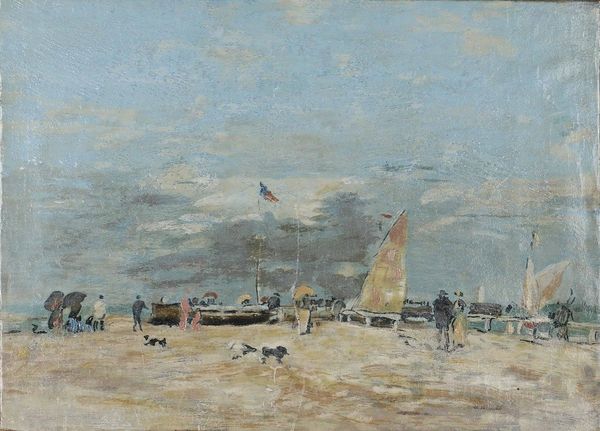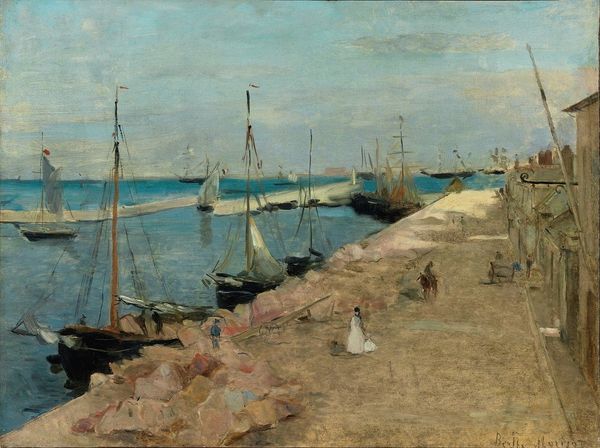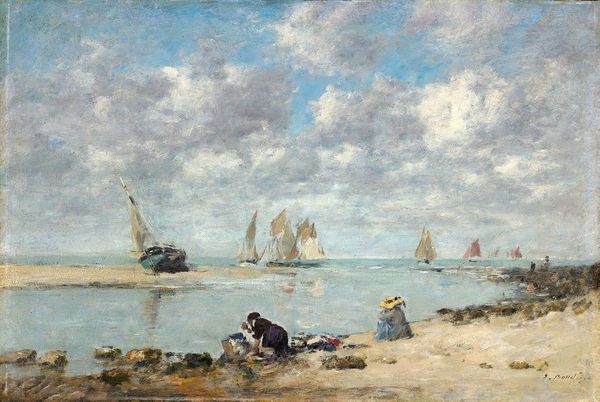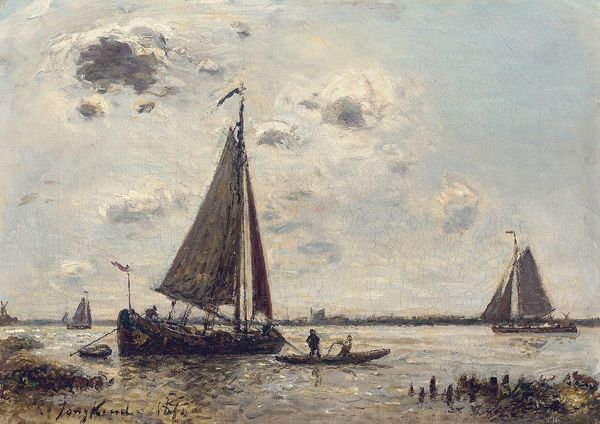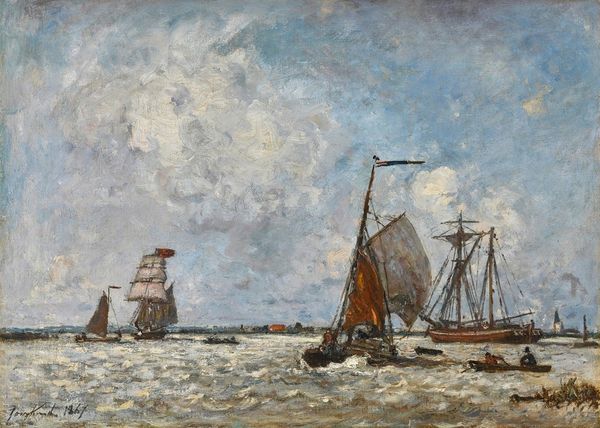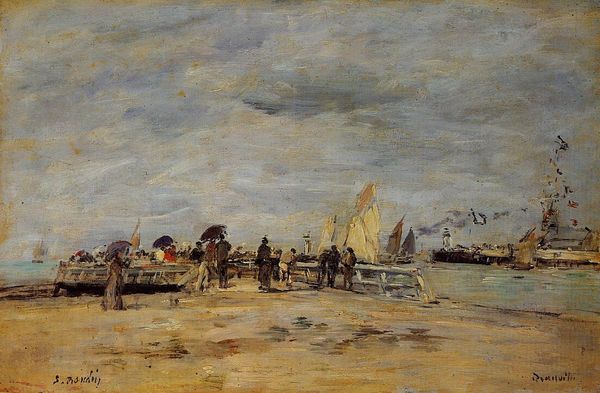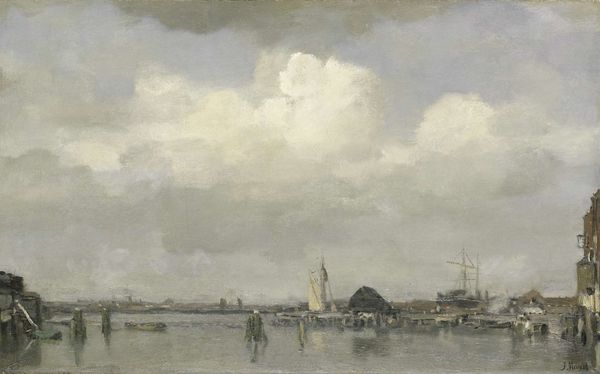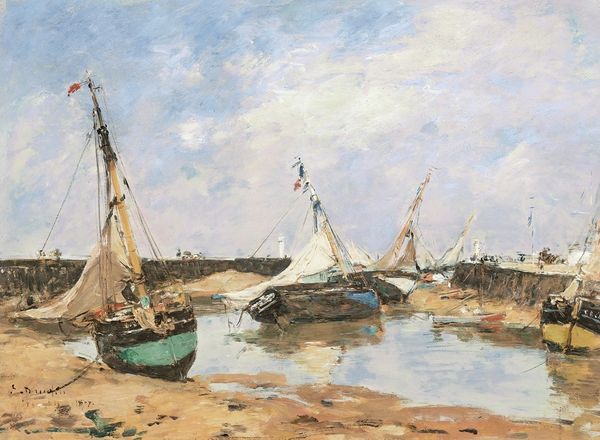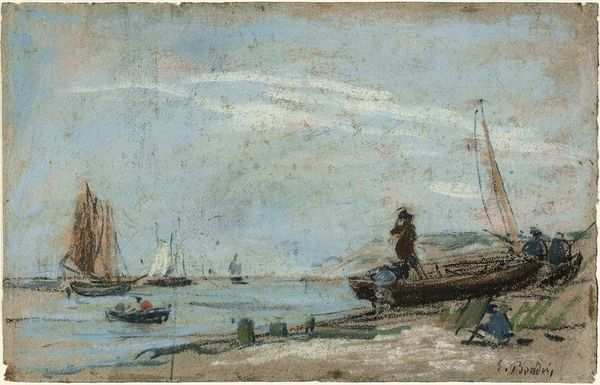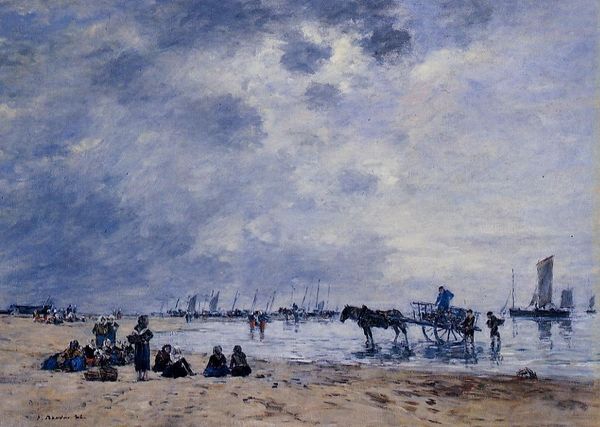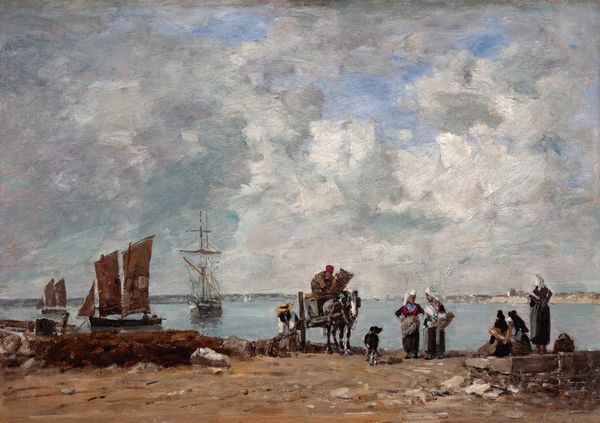
plein-air, oil-paint
#
impressionism
#
plein-air
#
oil-paint
#
landscape
#
painted
#
oil painting
#
cityscape
Copyright: Public Domain: Artvee
Editor: Here we have Eugène Boudin’s "On the Jetty," painted around 1869 or 1870, using oil paints. It feels… almost unfinished, very immediate, and focuses my gaze to a central gathering of people by the pier. What catches your eye? Curator: For me, it's about recognizing Boudin’s plein-air technique; understanding his direct engagement with the landscape and social relations as raw material for art. Instead of seeing ‘unfinished’, I observe a conscious choice to represent labor and leisure within the context of 19th-century seaside economies. Editor: Labor? I see more of an outing to the beach! Curator: But who gets to enjoy that outing? Boudin is meticulously painting a space where land meets water, and luxury touches labor. Consider how the materiality of oil paint – its accessibility, transportability for use *en plein air* – reflects a burgeoning art market catering to the wealthy. This allowed painters like Boudin to directly capture modern life as commerce and class intersected along coastlines. Does the jetty itself not appear to you as infrastructure built to support the tourism that fueled the local economy? Editor: I guess so. I hadn’t considered how the materials available—oil paints and canvas—made that sort of on-site, candid depiction even possible, thus reflecting class structure and supporting the business along the sea. That makes sense, thank you. Curator: My pleasure. Every brushstroke reveals choices dictated not just by aesthetic desire, but by the socio-economic possibilities of the era and of art-making itself. Editor: I’ll never see a landscape the same way again!
Comments
No comments
Be the first to comment and join the conversation on the ultimate creative platform.

